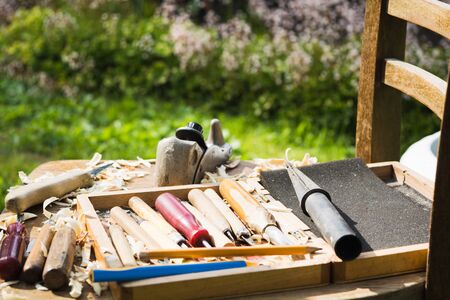The Benefits of Going Native: Value for You and the Environment
When you plan a native garden tailored to your region, you’re not just making your yard look great—you’re making a smart investment. Native plants are adapted to local conditions, meaning they typically require less water, fertilizer, and maintenance than exotic species. That translates into lower utility bills, fewer trips to the garden store, and more free weekends for you. But the upside doesn’t stop at convenience. Studies show that well-designed native landscapes can actually boost your property value by enhancing curb appeal and signaling eco-conscious stewardship to potential buyers. Even better, planting native supports local pollinators like bees and butterflies, helps restore natural habitats, and reduces your environmental footprint. In short, going native pays off—not only for your wallet but also for your community and the planet.
Understanding Your Local Ecosystem
Before you dig in and start planting, it’s crucial to get a solid understanding of your local ecosystem. Every region in the U.S.—whether its the humid Southeast, arid Southwest, or chilly Northeast—has its own unique blend of climate, soil types, and wildlife. Taking the time to assess these factors not only boosts your garden’s chances of thriving but also maximizes your investment by reducing costly mistakes.
Climate Considerations: Know Your Zone
The USDA Hardiness Zone Map is your first tool for smart native gardening. This map breaks down North America into zones based on average annual minimum temperatures. Matching plants to your zone ensures they can survive local winter lows and summer highs. Here’s a quick reference:
| Region | Typical USDA Zones | Key Climate Traits |
|---|---|---|
| Northeast | 3-7 | Cold winters, humid summers |
| Southeast | 6-9 | Mild winters, hot/humid summers |
| Midwest | 3-7 | Cold winters, warm summers, variable rainfall |
| Southwest | 5-10 | Hot/dry, big temp swings, low rainfall |
| West Coast | 7-10 | Mild/wet winters, dry summers (Mediterranean) |
Soil: The Foundation of Success
Your soil type impacts everything from water drainage to nutrient availability. Take a handful and squeeze—it’ll tell you a lot! Sandy soils drain fast but may lack nutrients; clay holds water but might suffocate roots; loam is the sweet spot most plants love. Consider getting a basic soil test kit from your local garden center or extension office for actionable insights.
Common Soil Types and Tips for Each:
| Soil Type | Main Features | Garden Tip |
|---|---|---|
| Sandy | Drains quickly, low nutrients | Add organic compost to boost fertility and water retention |
| Clay | Poor drainage, nutrient-rich but dense | Aerate and mix in organic matter to improve structure and drainage |
| Loam | Balanced texture, good drainage & nutrients | The ideal base—maintain with regular mulching and composting |
Wildlife: Partners in Your Garden’s Health
Your native garden is an ecosystem hub for pollinators like bees and butterflies as well as birds and beneficial insects. Research which species are common or threatened in your area so you can select plants that support them. For example, milkweed attracts monarchs; coneflowers feed songbirds.
Action Step:
Check resources like local cooperative extensions, Master Gardener programs, or even neighborhood Facebook groups for hyperlocal advice. The more you tailor your plant choices to your region’s conditions—and its wild residents—the bigger the long-term payoff for both your garden’s health and your bottom line.

3. Choosing the Right Native Plants
Success in native gardening starts with selecting species that are naturally suited to your local climate, soil, and ecosystem. While it’s tempting to pick plants purely for their looks, focusing on top-performing natives delivers better long-term results—think less maintenance, more resilience, and real returns for your landscaping investment.
Start Local: Know Your Growing Zone
Your USDA Hardiness Zone is your first checkpoint. This simple number tells you which plants can survive your area’s winter lows. Most native plant nurseries and online resources let you filter species by zone, so use this as a baseline to shortlist candidates.
Wildflowers, Shrubs, and Grasses: Mix It Up
For a garden that pops all season and supports pollinators, combine different types of native plants:
- Wildflowers: Black-eyed Susan, Purple Coneflower, California Poppy—these bring color and attract bees and butterflies.
- Shrubs: Serviceberry, Red-twig Dogwood, or American Beautyberry provide structure, shelter for wildlife, and multi-season interest.
- Native grasses: Switchgrass or Little Bluestem add texture and act as a low-maintenance groundcover.
Where to Source Native Plants
Avoid digging up wild plants—stick with reputable local nurseries or native plant sales. Ask staff for region-specific advice or check with your county extension office. You’ll often find cultivars bred for extra disease resistance or garden performance without sacrificing ecological benefits.
The ROI of Smart Plant Selection
Choosing the right natives pays off: they need less water, fewer chemicals, and support more birds and pollinators than exotic imports. That translates into lower bills, less work, and a yard that feels uniquely yours—and uniquely American.
Designing Your Garden for Visual and Practical Impact
When it comes to planning a native garden, combining style with sustainability is the real win-win. A well-designed native landscape not only boosts your homes curb appeal—making it stand out in your neighborhood—but also delivers meaningful environmental returns. Here’s how you can plan a garden that turns heads, helps the planet, and respects your budget.
Maximize Curb Appeal Without Overspending
Native gardens don’t have to look wild or unkempt. By grouping plants according to height, color, and bloom time, you can create visual interest all year round. Use native grasses as borders, layer perennials for depth, and place show-stopping shrubs near entryways. Choose a simple color palette to keep things cohesive, which looks both intentional and elegant—plus, less variety means you buy fewer plant types, saving cash up front.
Quick-Start Design Tips
- Start Small: Tackle one section at a time to spread out costs.
- Use Mulch: Suppresses weeds and retains moisture, reducing maintenance and water bills.
- Reuse Materials: Incorporate reclaimed stones or bricks for edging paths and beds.
Functional Features That Deliver Returns
Your native garden can do more than look good—it can solve practical problems. Consider rain gardens to manage stormwater runoff or pollinator patches to attract bees and butterflies (which help your veggie garden too). If you have kids or pets, designate pathways with gravel or stepping stones to reduce wear on planting areas.
Cost-Effective Solutions Table
| Feature | Visual Benefit | Environmental Impact | Budget-Friendly? |
|---|---|---|---|
| Rain Garden | Lush focal point | Reduces runoff & filters water | Yes – DIY friendly |
| Mulched Paths | Crisp structure | Keeps weeds down | Very affordable |
| Pollinator Patch | Pops of color | Supports local wildlife | Low cost seeds/plugs |
Sustainable Design Pays Off
A smartly designed native garden lowers ongoing costs: less watering, fewer chemicals, and minimal mowing. Over time, these savings add up—not just in dollars but in less work for you every weekend. Plus, homes with attractive landscaping typically see higher property values if you ever decide to sell. So invest some sweat equity now for long-term financial and environmental rewards.
5. Step-by-Step Guide to Planting and Maintaining Your Native Garden
Step 1: Site Preparation for Maximum ROI
Start by clearing your chosen site of weeds, grass, and debris. Test your soil to understand its pH and nutrient profile—most native plants are adapted to local soil, but small amendments can give you a head start. Lay out your garden design on paper first, grouping plants by sunlight and water needs. This careful prep ensures you invest time and money where it matters most.
Step 2: Smart Plant Selection and Placement
Choose native species proven to thrive in your specific region (consult your local extension office or native plant society). Opt for a mix of perennials, grasses, and shrubs for year-round interest and pollinator appeal. Place taller plants at the back or center, with shorter ones up front. Give each plant enough space—overcrowding leads to higher maintenance costs down the line.
Step 3: Efficient Planting Techniques
Plant in early spring or fall when temperatures are moderate. Dig holes twice as wide as the root ball but only as deep. Water plants before removing from pots, gently tease out roots, and set them in place at the same depth as they were growing in their containers. Backfill with native soil, press firmly, and water thoroughly. Mulch immediately to retain moisture and suppress weeds—a small investment that pays big dividends.
Step 4: Maintenance for Lasting Beauty and Low Overhead
Water new plants regularly during the first season; after that, many natives will thrive on rainfall alone. Weed regularly for the first year—afterward, dense planting and mulch will do most of the work for you. Prune dead stems in late winter to encourage healthy growth. Resist over-fertilizing; most natives prefer lean soils, saving you both money and effort.
Step 5: Monitor, Adjust, and Celebrate Success
Track what works (and what doesn’t) each season. If certain plants struggle, swap them for hardier options next year. Share excess seedlings or seeds with neighbors to expand your investment’s impact—and build community pride. Document your garden’s progress with photos; not only is it rewarding, but it also helps refine your strategy for bigger returns each year.
The Takeaway
A well-planned native garden is a high-yield asset: it saves time, cuts water bills, boosts curb appeal, and supports local wildlife. By following these actionable steps, you’ll maximize both the beauty and value of your landscape for seasons to come.
6. Measuring Success: The Tangible and Intangible Payoffs
So, you’ve put in the work to plan and plant your native garden—now it’s time to measure the return on your investment. A successful native garden pays you back in ways you can see and feel, both immediately and over time. Here’s how to recognize those signs and track your garden’s growing value.
Pollinator Traffic: Nature’s ROI Report Card
One of the first indicators your native garden is thriving is increased pollinator activity. Watch for bees, butterflies, hummingbirds, and other beneficial insects—these visitors are proof that your plants are supporting local wildlife and boosting biodiversity. Keep a simple journal or use a mobile app to log pollinator sightings throughout the seasons for a clear picture of your garden’s ecological impact.
Water Savings: Real Dollars Back in Your Pocket
Native plants are adapted to your region’s rainfall patterns, so they require far less irrigation once established. Compare water bills before and after installing your native garden; many homeowners report significant savings within the first year. This isn’t just good for the environment—it’s a tangible cut in monthly expenses, especially during hot American summers when traditional lawns need constant watering.
Low Maintenance: Time Is Money
With less mowing, fertilizing, and pest control needed, you’ll spend fewer weekends behind the mower or at the hardware store. Track how much time and money you save on landscaping chores—a key metric if you value your free time as much as your wallet.
Long-Term Value: Boosting Curb Appeal & Property Worth
A well-designed native garden doesn’t just make your home look great; it also boosts curb appeal—a big deal in many U.S. neighborhoods. Prospective buyers increasingly seek eco-friendly features, so consider snapping before-and-after photos or keeping records of compliments from neighbors and realtors. Over time, these details can translate into real dollar value if you decide to sell.
Emotional Payoff: Personal Satisfaction & Community Impact
Beyond numbers, there’s something deeply satisfying about watching a healthy ecosystem flourish right outside your door. Native gardens foster a sense of stewardship and pride—plus, they’re conversation starters with like-minded neighbors. Share updates on social media or with local gardening groups to inspire others and amplify your positive impact.
The bottom line? Tracking both tangible returns (like cost savings) and intangible wins (like increased biodiversity) ensures you’re maximizing every dollar and hour invested in your native garden. As you watch it grow season after season, you’ll see that this is one green investment that keeps paying off in more ways than one.

